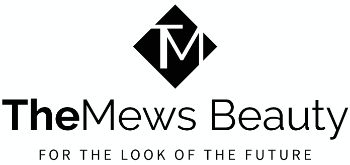The goal of improving teeth alignment is no longer viewed solely as a cosmetic pursuit; teeth straightening can also help mitigate potential bite issues and promote better oral health. Orthodontic options have expanded significantly, with new technologies offering solutions that are more discreet than ever before. Choosing the right method can feel complex, particularly in a city where treatments, trends, and techniques constantly evolve. When people consult cosmetic dentists they often seek guidance that takes both visual appeal and function into account, giving them a treatment plan that addresses long-term oral well-being. While older methods remain effective, modern options like Invisalign broaden the choices available for people of different ages and needs.
“In my experience, many patients appreciate the flexibility that contemporary cosmetic dentistry can offer,” notes the leading London cosmetic dentist Dr. Sahil Patel of Marylebone Smile Clinic. “Though traditional braces remain a solid option, some favour a more transparent route, which can align teeth while maintaining a subtle, professional aesthetic. It is important, however, to have a tailored treatment plan that addresses each individual’s unique requirements. A thorough consultation helps ensure that any alignment method maximises oral health benefits as well as cosmetic results.” If you are interested in learning more about Invisalign in London, reviewing the advantages and potential considerations can guide you to the best decision for your lifestyle and desired outcome.
The purpose of comparing Invisalign with traditional braces is to provide both an overview of the science behind these methods and a realistic look at how they fit into everyday life. Individuals who want to correct crowding, spacing, or bite problems should have a clear understanding of what each system entails, from maintenance obligations to long-term effects. Ultimately, the choice should reflect a patient’s preferences, budget, oral health status, and professional advice from a qualified dental provider.
Table of Contents
Orthodontics in London
London has a rich history in dentistry, with numerous clinics establishing themselves as centres of innovation. Orthodontic treatments have advanced considerably over the years, partly due to new approaches in materials science and partly because of changing attitudes toward dental care. Where braces were once an option primarily for children and teenagers, adults are now seeking orthodontic solutions that can discreetly refine their smiles without disrupting professional or social responsibilities.
This shift in perspective is partly motivated by higher aesthetic standards, but it also aligns with the growing recognition that straight teeth offer practical benefits. Crowded teeth can create hard-to-reach spaces where plaque accumulates, leading to issues such as gum disease or bad breath. Gaps in teeth can leave soft tissue more exposed and may compromise biting efficiency. Consequently, methods for straightening teeth not only serve a cosmetic purpose but also address broader oral health concerns.
With so many options on the market, people often look to experts when selecting an alignment system. Where older braces relied on metal and wires that were often noticeable, newer variations use ceramic brackets or advanced materials that blend with tooth colour. Invisalign, introduced in the late 1990s, remains a leading pioneer of nearly invisible tooth straightening through custom-made aligners that can be removed for eating or brushing. This technological evolution mirrors a broader societal change: individuals in professional settings and adults at large desire subtle corrective measures that do not draw attention or hamper everyday routines.
Economic factors also play a role. While the city of London remains home to a diverse range of incomes, many see quality orthodontics as an investment in health and confidence, rather than a mere luxury. Payment plans, dental insurance, and competitive rates for various treatments contribute to the accessibility of both Invisalign and traditional braces. As a result, comparing these systems helps prospective patients weigh considerations such as upfront costs and potential return on investment, all while evaluating the visual appeal of each method.
In this dynamic context, both Invisalign and traditional braces stand out as strong contenders for effective, proven realignment. Whether someone chooses one over the other often depends on personal preferences, the complexity of the dental problem, and guidance from dental professionals who understand both the short- and long-term implications. The following sections examine each treatment method in detail, considering the mechanics behind them, the range of conditions they address, and how their differences translate into daily life for patients in London.
Invisalign in Detail
Invisalign uses clear aligner trays created from a thermoplastic material that is strong yet flexible, allowing for a precise fit over the teeth. Each aligner is custom-made based on 3D scans of the patient’s mouth, a process that ensures the trays conform to every ridge and contour. Patients receive a series of aligners, each slightly different in shape, which gradually shift the teeth into the desired positions. The user switches aligners every couple of weeks, following a schedule determined by the dentist or orthodontist, and this process continues until the treatment plan is complete.
One significant advantage of Invisalign is its near-invisibility. The aligners do not usually attract attention, particularly when a person is speaking or smiling from a normal conversational distance. This feature has enormous appeal for adults who prefer to correct their teeth without the noticeable brackets and wires that come with traditional braces. Another plus is that the aligners are removable, meaning users can take them out when eating or brushing their teeth. This removability reduces the dietary restrictions often associated with braces—patients do not have to avoid crunchy or sticky foods, as they can simply remove their aligners before meals.
Still, for all its conveniences, Invisalign requires discipline and consistent use. Patients are advised to wear their aligners for about 22 hours per day, taking them out only for short periods, such as mealtimes or brushing sessions. Those who neglect to wear the trays for the recommended duration risk prolonging their treatment or not achieving the desired results. This discipline can be a challenge for younger patients or those whose schedules involve frequent dining out or socialising, where continuous removal might occur.
In terms of capabilities, Invisalign technology has advanced to correct a wider range of orthodontic issues. Mild to moderate cases of crowding, spacing, and bite misalignment typically respond well to the aligner system. However, severe misalignment or complex bite issues might still be better served by traditional braces. Cost is another factor to consider. Invisalign generally falls within a range comparable to advanced types of fixed braces, but the final expense can vary depending on the complexity of the case and the length of treatment. While many find the aesthetic benefits worth the cost, it is wise for prospective patients to seek a proper assessment to understand whether Invisalign is the most suitable method for their specific needs.
Traditional Braces in Detail
Traditional braces remain a reliable orthodontic tool. They typically consist of metal brackets, wires, and elastic bands that work in unison to apply consistent pressure on the teeth, prompting them to shift over time. The treatment process begins with an evaluation of the patient’s teeth, followed by the placement of brackets on the tooth surfaces. A wire is then threaded through the brackets and secured with small rubber bands. Adjustments made every few weeks involve tightening or otherwise altering the wire to ensure steady progress. This tried-and-true approach has been in use for decades, refined continuously as new materials improve comfort and efficiency.
One of the strongest points in favour of traditional braces is their effectiveness in addressing even severe or highly complex alignment issues. Cases that involve significant overcrowding, rotated teeth, or complicated bite irregularities are often more manageable with braces. Because the system is fixed, the patient does not have to worry about forgetting to wear aligners for a certain number of hours each day. Compliance is built-in, and the constant pressure of the brackets and wires can deliver predictable movements in a systematic manner.
A potential downside is visibility. Metal braces are noticeable, and some adults may feel self-conscious about wearing them in professional or social contexts. Though ceramic or tooth-coloured braces exist as a less conspicuous version, they can still be more visible than clear aligners. Traditional braces also require specific care when eating. Sticky or hard foods need to be avoided to prevent damage to the brackets or wires. Extra attention is required for cleaning as well. Since the braces remain on the teeth, flossing and brushing around the wires can be tricky, demanding tools like floss threaders to maintain proper oral hygiene.
The length of treatment with traditional braces varies depending on the complexity of the case, but it often falls between 18 months and two years. In more complicated scenarios, treatment may last longer. Yet for those whose dental challenges are severe, braces can be the most direct route to a healthy, well-aligned smile. Orthodontists and dentists have been perfecting techniques for adjusting braces for decades, making it a tried and tested approach that remains relevant even as newer technologies gain popularity.
Comparing Invisalign and Traditional Braces
When it comes to aesthetics, Invisalign typically wins over traditional braces. The clear aligners are far less visible, an attribute especially appreciated by working professionals, public figures, or anyone who prefers to correct their smile without drawing attention. Traditional metal braces, by comparison, are immediately noticeable and can carry a stigma among adults who feel braces are more associated with adolescence.
In terms of comfort, some patients find that Invisalign aligners cause less irritation compared to the brackets and wires of traditional braces. While the aligners can cause mild pressure, especially when switching to a new set, they do not usually rub as much against the gums or the inside of the cheeks. However, each person’s experience can differ; traditional braces can be relatively pain-free after the initial period of adaptation, and the improvements in bracket design over the years have mitigated some discomfort.
Another important distinction lies in treatment compliance. Invisalign’s effectiveness heavily depends on the patient’s willingness to wear aligners for the recommended 22 hours daily. Any deviation from this schedule can hamper progress. Traditional braces bypass this issue by being fixed in place, but they come with their own set of care requirements. Individuals must remain diligent about hygiene, learning techniques to brush and floss effectively around brackets and wires. Any oversight can lead to increased risk of cavities or gum disease.
Cost is a mixed consideration. Both systems can be comparable in price, but traditional braces may sometimes be more cost-effective for certain types of cases, particularly those that require extensive corrections. Invisalign, on the other hand, might have additional lab fees, given the digital design and manufacturing of multiple aligner sets. Each practice sets its own pricing structure, so it is essential for prospective patients to consult with a dentist or orthodontist who can offer a personalised quote.
Addressing Key Concerns: Cost, Timeline, and Maintenance
For those living in a diverse and sometimes expensive metropolis like London, cost often emerges as a key concern in orthodontic decisions. Treatment expenses vary, factoring in aspects such as the complexity of the case, the need for additional procedures, and the practice’s location. In some instances, a cosmetic dentist London residents trust may offer financing plans that break down the total cost into manageable monthly payments, making both Invisalign and traditional braces more accessible. Additionally, the type of correction required plays a big role in determining price. Cases involving more complex movement or jaw alignment might have higher costs, regardless of the system chosen.
Timeline is another primary factor. Traditional braces can require between 18 months and two years for noticeable improvements in moderate to complex cases, sometimes longer for particularly intricate scenarios. Invisalign can have a similar timeframe, though some milder issues can be corrected in as little as six months to a year. Patients should note that cutting corners—such as failing to wear aligners for the necessary hours each day—can extend the timeline for Invisalign. Both systems benefit from regular check-ups, where adjustments or new aligners are provided.
Maintenance and aftercare practices differ as well. With traditional braces, patients must be extra cautious with their diet and pay diligent attention to brushing and flossing. Foods that are excessively crunchy, sticky, or sugary can damage the hardware or increase cavity risks if cleaning is inadequate. Invisalign simplifies maintenance to an extent: patients can remove aligners to eat and then brush normally. The aligners themselves require cleaning with a soft brush or special cleaning tablets to keep them free from bacteria or discolouration. While daily life may be easier in some respects, patients should still be mindful about remembering to put the aligners back in to maintain their recommended wear time.
Another crucial element is post-treatment care. Regardless of the system used, retainers are often necessary to maintain the new alignment of the teeth. These retainers can look similar to Invisalign trays or may be fixed wires placed discreetly behind the teeth. Consistent retainer use is vital to prevent shifting over time, preserving the effort and investment put into the alignment process. Patients should discuss with their dentist or orthodontist to determine the retainer schedule that best suits their specific situation.
The Role of Cosmetic Dentistry in Orthodontic Treatments
Cosmetic dentistry and orthodontics share a common objective: improving the appearance of a patient’s smile. However, cosmetic treatments typically extend beyond alignment, encompassing procedures like veneers, bonding, or teeth whitening. In many instances, a patient’s overall goal may include straightening the teeth as one step in a larger plan to achieve an aesthetically pleasing smile. A dentist well-versed in both cosmetic and orthodontic options can provide valuable insights into how alignment interacts with other treatments.
For instance, a person might choose Invisalign to close gaps and correct crowding before proceeding with whitening or veneers. This approach can result in more symmetrical and balanced results, as veneers or bonding can be tailored to the newly aligned teeth. Similarly, some individuals with severely stained or chipped teeth might opt to combine braces or Invisalign with restorative procedures. The integrated approach emphasises not only the final look but also the health and longevity of the teeth.
A cosmetic dentist may recommend orthodontic solutions to address functional issues that are causing aesthetic concerns. Overlapping or misaligned teeth can trap debris, leading to inflammation or even changing the shape of the gums over time. By correcting these underlying issues, subsequent cosmetic procedures can be performed more effectively, yielding a smile that is not only more attractive but also more stable in the long run.
Choosing the Right Path to a Straighter Smile
Selecting between Invisalign and traditional braces often involves balancing multiple considerations. For many adults, the discreet nature of Invisalign is highly attractive, as it enables treatment without the noticeable presence of metal brackets. The ability to remove aligners for meals and oral hygiene can simplify daily life, especially for those who travel frequently or attend many social or professional events. On the other hand, some patients prefer the built-in compliance of fixed braces, which eliminates the responsibility of frequently removing and replacing aligners. Young adolescents, in particular, may benefit from a system where adherence is not as easily overlooked.
The complexity of the orthodontic issue is another crucial factor. While Invisalign has expanded its capabilities significantly, extremely severe or intricate cases may be managed more effectively with traditional braces, which grant orthodontists more direct control over tooth movement. In such scenarios, the effort to achieve a properly aligned bite might be more efficiently accomplished with fixed hardware. Dentists and orthodontists can assess the severity of crowding, spacing, and bite alignment during an initial consultation and advise on whether Invisalign or braces is more appropriate.
People who prioritise cost-effectiveness might lean toward traditional braces, though the pricing structure can vary depending on the practice and the complexity of the case. It is generally wise to obtain multiple quotes or at least discuss payment options with a single trusted clinic. In many cases, the overall expenditure for modern braces can be similar to Invisalign, so the decision might hinge more on personal preference than on cost alone.
Because London’s pace of life is often fast, convenience might be yet another motivating factor for choosing Invisalign. Individuals who can maintain a disciplined routine may find Invisalign’s removable aligners more compatible with their lifestyle. However, others may prefer the constant correction provided by braces. Ultimately, the goal should be to select a system that aligns with both the practicalities of daily life and the demands of the treatment plan.
Conclusion
London’s bustling atmosphere offers a wide array of dental care choices, making the decision between Invisalign and traditional braces both exciting and challenging. Each method has merits, with Invisalign delivering remarkable discretion and ease of use, and braces showcasing unparalleled reliability across even the most complex of cases. When in doubt, seeking a comprehensive consultation remains the best route: a qualified dentist or orthodontist can evaluate the nature of the misalignment, discuss the patient’s lifestyle preferences, and work out a plan that balances appearance and practicality.
Alongside their clear and present aesthetic benefits, orthodontic treatments can contribute significantly to better oral health. By aligning the teeth properly, patients can reduce the likelihood of tooth decay, gum disease, and bite problems that cause discomfort or difficulty chewing. Whether chosen for cosmetic reasons or preventive care, the path to a straighter smile can be both fulfilling and beneficial in the long term.
A final note is the importance of aftercare. Straightening the teeth is an investment in oral health and overall appearance, an investment that deserves protection through diligent retainer use and ongoing dental check-ups. With ongoing care, a newly aligned smile can endure the rigours of a hectic city life, supporting comfort, self-confidence, and well-being for many years to come. Whether your journey takes you down the route of clear aligners or fixed braces, London’s thriving dental community offers guidance and expertise to help you achieve the results you desire, all underpinned by the city’s longstanding tradition of medical and technological advancement.




